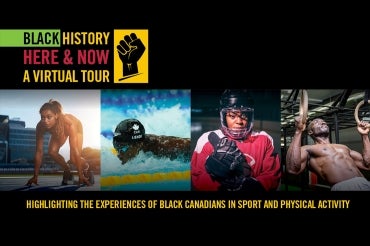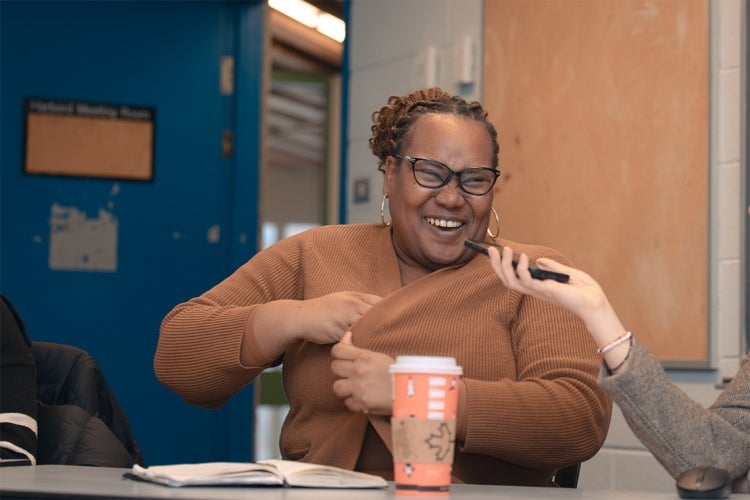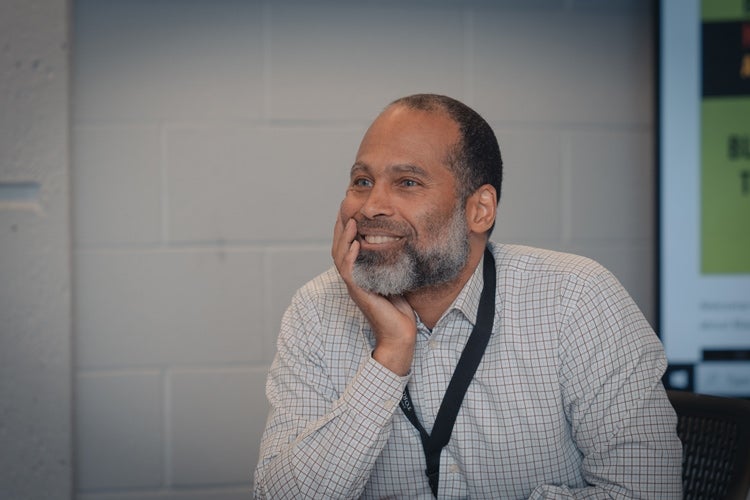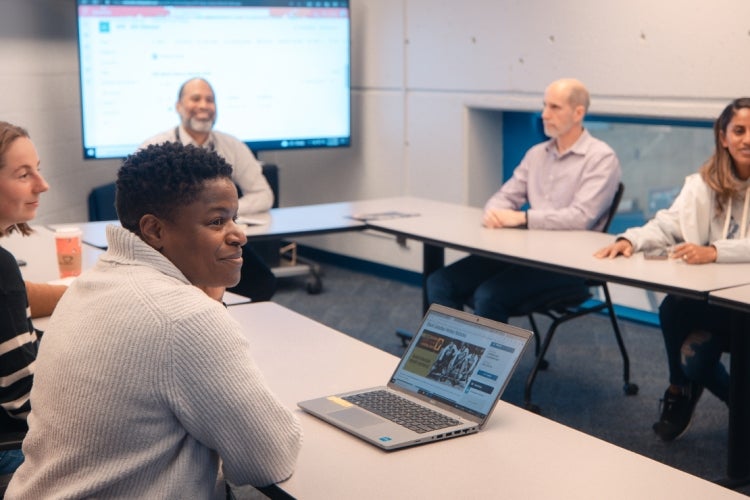Kinesiology students, staff and faculty create virtual tour to highlight Black history in sport

Published: February 6, 2024
Devonnia Miller did a lot of dancing growing up in the Bahamas, from ballet and tap to acrobatics and jazz. So, when the opportunity presented itself to learn more about the history of Black dance in Canada – she leaped.
An executive assistant to the chief administrative officer in the University of Toronto’s Faculty of Kinesiology & Physical Education (KPE), Miller was part of an 18-member KPE Black History Month (BHM) working group – composed of staff, faculty and students – that worked collaboratively to illuminate Black Canadian history in sport and physical activity (a full list of members can be found at KPE).
The result is the Black History Here & Now virtual tour, a unique experience that uses QR codes, located throughout the Athletic Centre and Varsity Arena, to connect visitors to virtual presentations of Black Canadian accomplishments and experiences in sport and physical activity.
“The group wanted to link the online information to KPE’s physical spaces as a way of grounding history in the present and allowing participants to have an embodied experience of moving through the physical spaces to access information linked to each area – for example, the history of Black people and swimming is linked with the pool,” says Terry Gardiner, KPE’s director of equity, diversity and inclusion, who participated in the project’s development.
“The community is welcome to discover each location in person or to access the virtual tour online.”

Janelle Joseph, an assistant professor at KPE and director of the Indigeneity, Diaspora, Equity and Anti-racism in Sport (IDEAS) research lab, says she was happy to contribute her knowledge and expertise to the group.
“Black Canadian sport and leisure experiences are a significant part of my research and I still have many more curiosities to satisfy,” Joseph says. “My top priority is to document Black Canadians' international achievements and acknowledge the enduring presence of racism in Canadian sport.”

Joseph adds that she particularly enjoyed the opportunity to collaborate with staff on the project.
“Celebrating the achievements of athletes, coaches, administrators, athletic therapists and researchers of Black, Caribbean and African heritage leads to increased respect and contributes to ending ongoing patterns of discrimination,” says Joseph. “I want every Black youth to know there is a possible path for them in kinesiology, sport, recreation and leisure – and for every person in our facilities to know the names of Black Canadian sport contributors.”
Unearthing those names did not come without challenges. The scarcity of data on Black histories in sport and physical activity came as a surprise to many in the working group, including Miller, who struggled to find much information about Black dancers in Canada.
“That really stood out to me,” she says. “I hope the project opens up people's eyes to what the group was able to find out.”

For Anthonia Aina, who is pursuing her PhD at KPE by studying the effects of music on movement, the dearth of data documenting Black histories came with a silver lining.
“Knowing what we lack and seeing how we can build on that is a good starting point,” she says.
Colleen Dotson agrees. The head coach of U of T’s Track and Field Club says she hopes the project leads not only to greater visibility of Black Canadians in sport, but also better storage documenting of their achievements and experiences.
“People don't know about this history,” she says. “If it's uncovered and then goes back in a box again, that's of no use either, so hopefully, it finds a place to live, so these people’s stories can live on.”
The group also hopes the information uncovered by the project will help start and sustain conversations about race and inclusion in sport and physical activity.
“Black history is Canadian history and we all benefit from connections with the rich legacies and stories of both struggle and triumph that have helped shape sport and physical activity in Canada,” says Gardiner.
“I hope people look at what we did and start noticing the questions they never asked themselves, because that's what I experienced personally,” adds Sami Anguaya, a development officer in KPE’s alumni and advancement office.
Learning is what motivated Tricia McGuire-Adams to join the project. McGuire-Adams is an associate professor at KPE, studying the resurgence of Indigenous perspectives in kinesiology. She says she was eager to join KPE staff and students to learn more about Black Canadians’ achievement and experiences in sport.
“It was a truly meaningful experience and I am grateful for the opportunity to learn and grow together,” she says.
Danielle Dobney, an assistant professor at KPE, says she enjoyed working and learning with other members of the KPE community and hopes the end result contributes to “a bigger presence of diversity in our spaces and conversations.”



